Passata di pomodoro is an Italian staple. You have likely heard of it or perhaps even used it without knowing what it was! At its core, tomato passata is simply a tomato purèe or strained tomatoes with a bright tomato flavor that can be used as the base of all kinds of sauces and dishes.
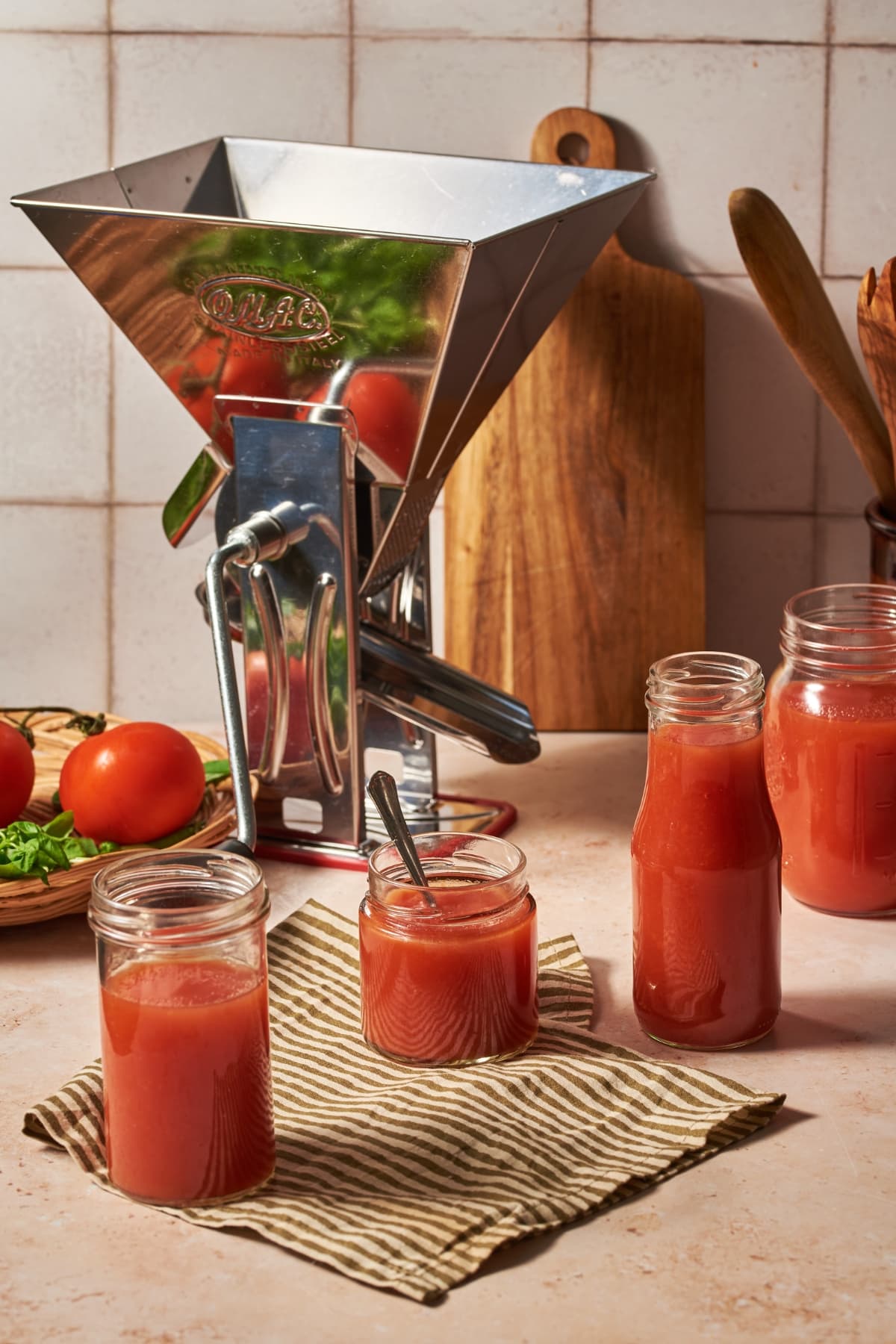
There are a few characteristics that set tomato passata apart from basic tomato puree. The most important is that tomato passata has the seeds and sometimes skins removed. This extra step isn’t always present when making a tomato puree. In addition, tomato puree is also usually cooked for a longer period of time while passata is sometimes barely cooked at all.
Italian passata is something that most Italians eat every single week, in pasta recipes, soups and much more. Find out more about this delicious ingredient.
Kitchen tools needed:
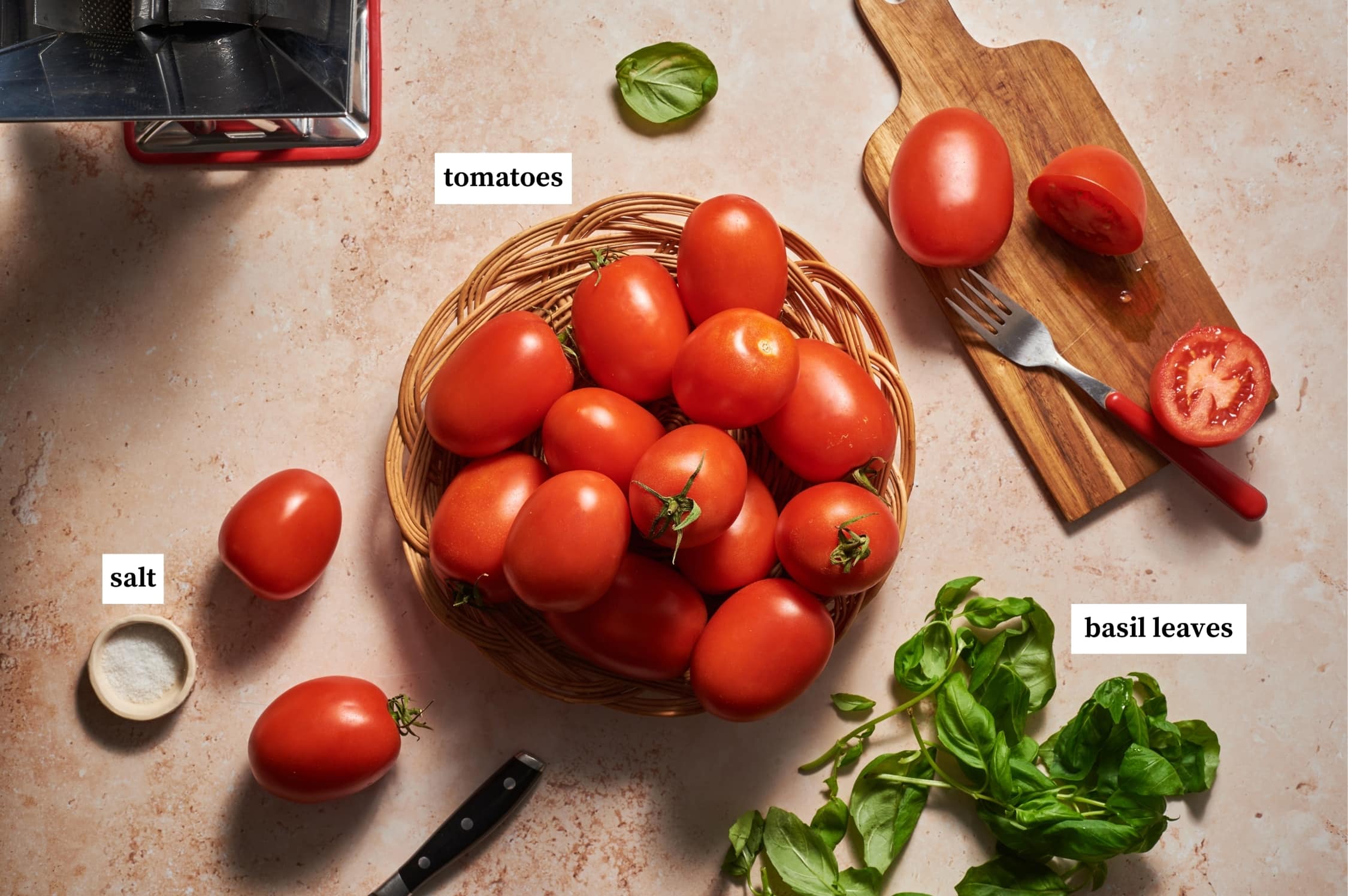
Prep the tomatoes: Wash and dry the tomatoes. Slice each tomato in half and gently squeeze or scoop out the seeds (photo 1). You can opt to leave the seeds in the tomatoes and simply strain them later in the recipe, however, removing them, in the beginning, is the best way to ensure there are no seeds in the passata. It also prevents the passata from being too liquid and creates a thick sauce with a smooth consistency of a tomato purée.
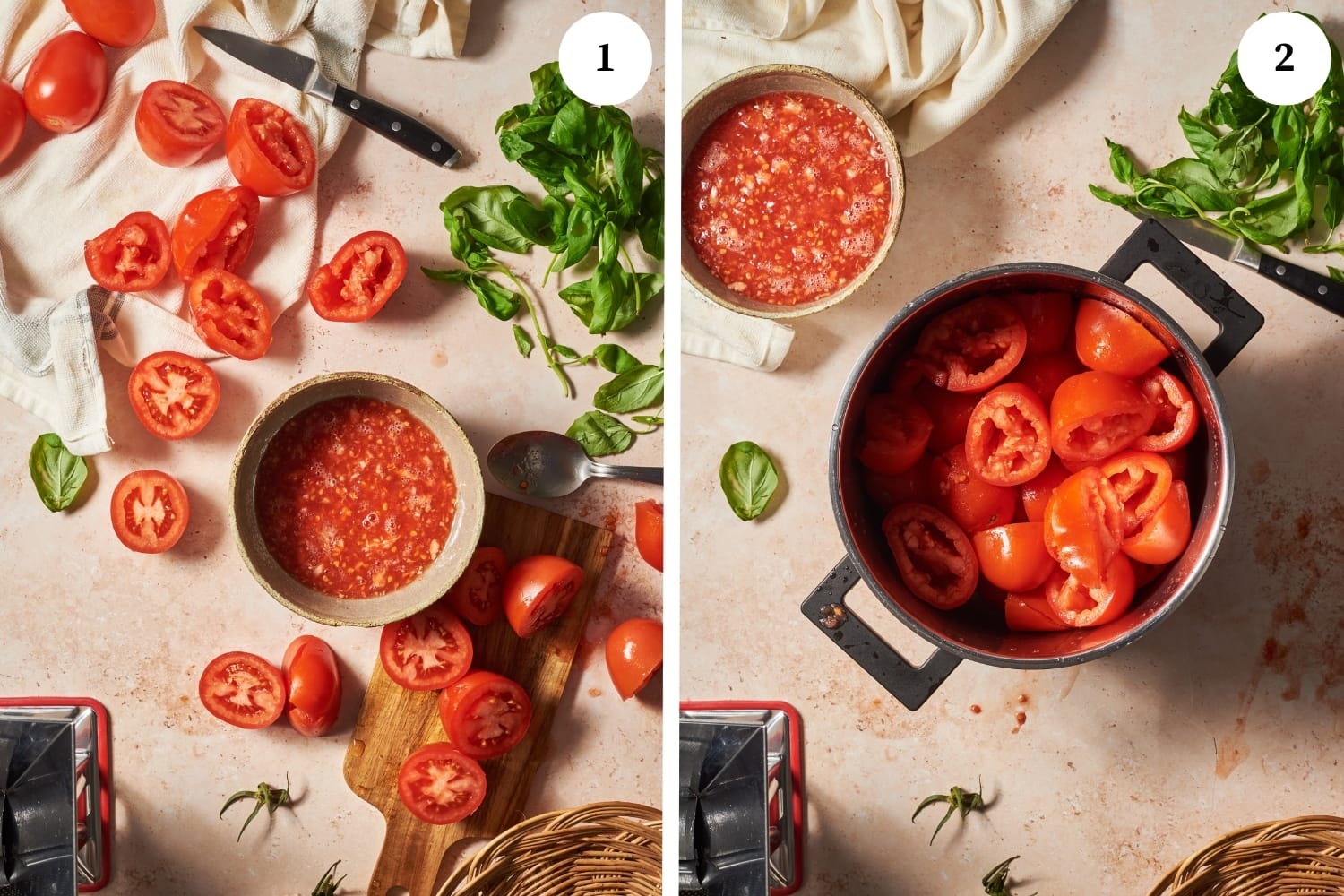
Cook the tomatoes down: Place the cleaned tomatoes in a large pot, cover, and cook over medium-low heat, stirring occasionally. Cook the tomatoes until they are soft, not totally mashed (photo 4). It will take approximately 20-30 minutes. Some people add salt to the recipe at this point, but traditionally it is left without salt so it can be used in any recipe.
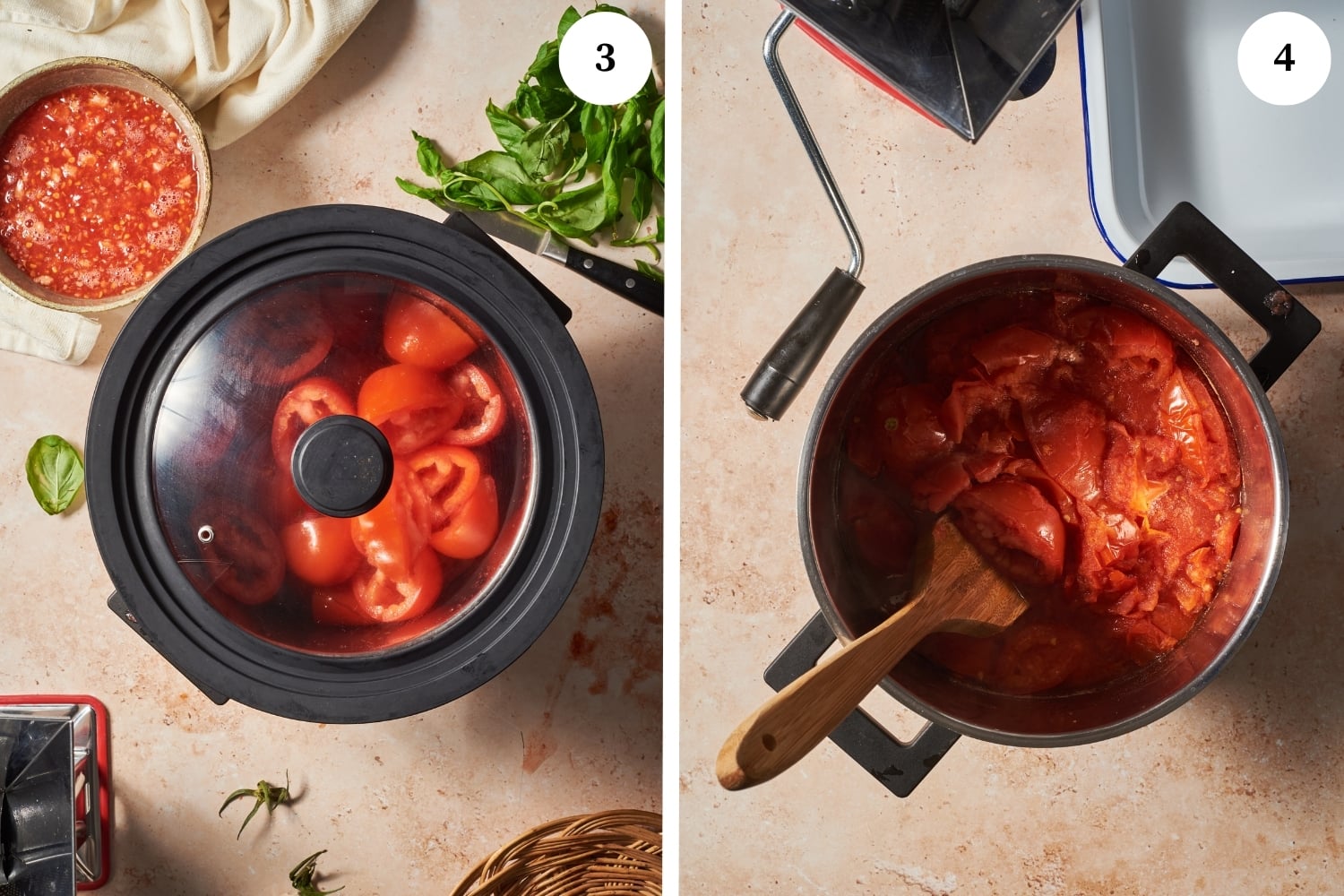
Make the passata smooth. Place the tomatoes through a strainer machine or food mill (photo 5), this removes the seeds and some skin and makes the sauce very smooth. If the sauce seems too liquid for you at this stage, put it through a very fine strainer to remove some of the liquid and obtain the right consistency.
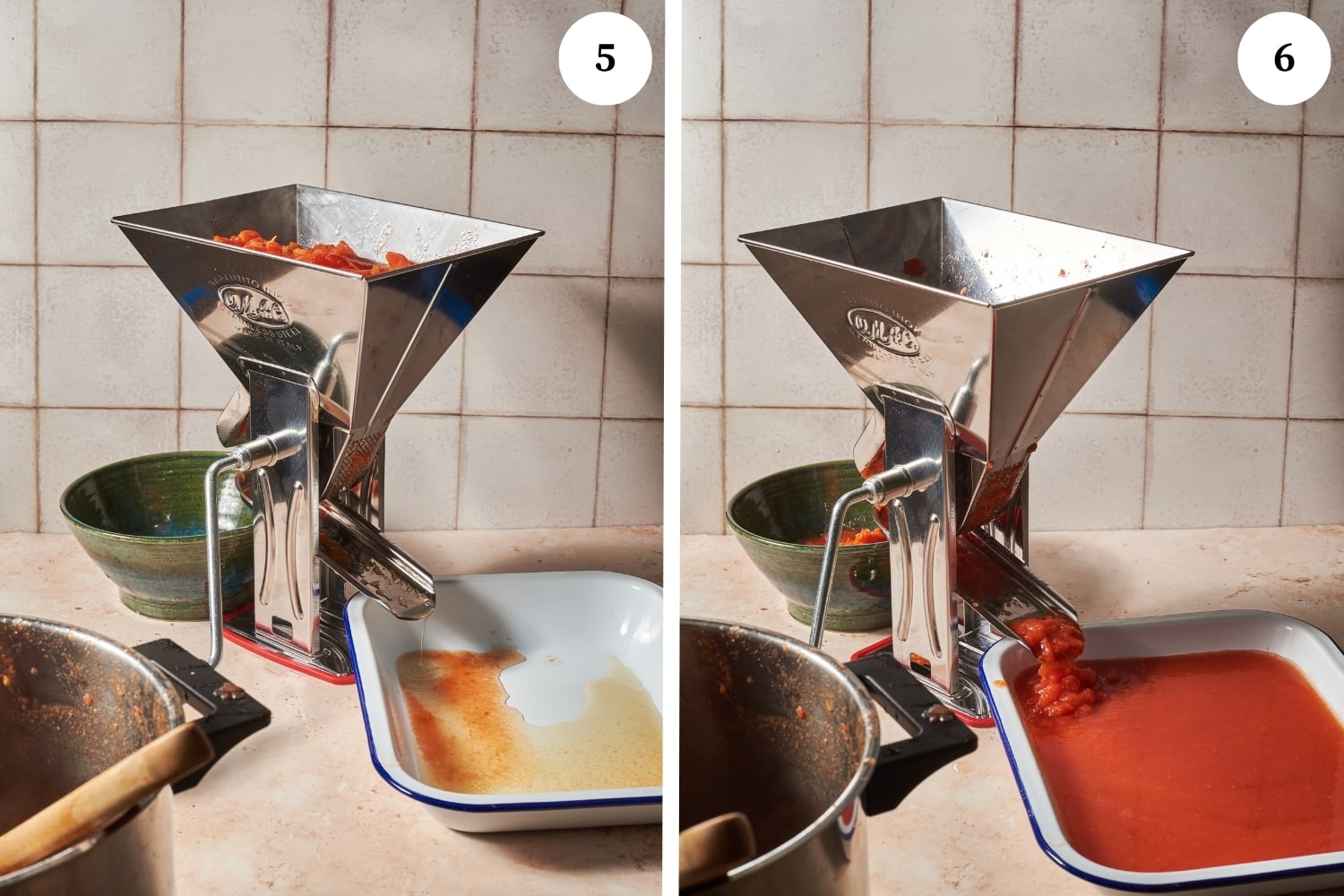
Can or use as desired. You can add some fresh basil leaves if desired. Your wonderful homemade passata is now ready to can or use in your favorite tomato sauce recipe to get a bright tomato flavor with just a dash of olive oil and fresh basil leaf on top and a sprinkling of Parmesan.
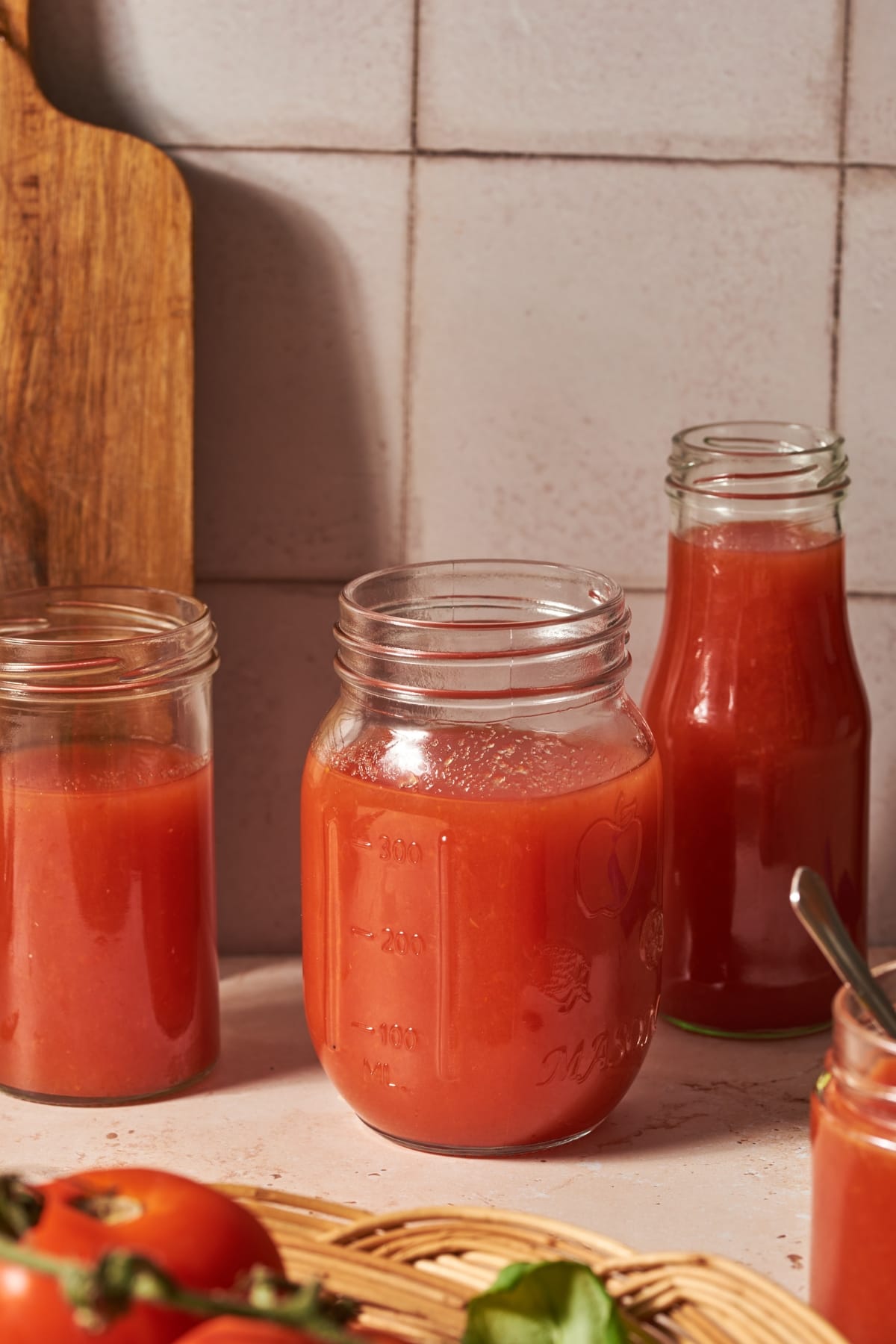
So what exactly is this specialty tomato passata used for? You can pretty much use passata in any Italian cuisine recipe that calls for tomatoes. It can be used in soups, stews, and pasta sauces. Passata di pomodoro will give your dish the full flavor of fresh tomatoes even when they aren’t in season with some people saying that they offer more flavor than canned tomatoes.
Tomato passata has a smooth sauce-like texture, making it the perfect base for any of your favorite pasta sauces like bolognese sauce, stews or casseroles such as eggplant parmigiana. You do not need to puree passata or alter it in any way – it is ready to use right out of the jar! Once you try using this great passata recipe rather than canned tomatoes or tomato purée from grocery stores, which is often heavily seasoned and can ruin simple Italian pasta sauces, you will never go back.
Other Italian sauces to try:
You can keep passata in the fridge for up to 3 days. Passata can also be frozen in an ice cube tray and then transferred to freezer Ziplock bags and kept in the freezer for up to 3 months. When you need a little tomato purèe in a recipe you can simply pull out as many tomato purée ice cubes as you need and defrost and use them.
Passata is simply strained tomatoes and is not the same as what Americans typically think of as tomato sauce. The first has only tomatoes and the second usually has other ingredients such as olive oil, spices, salt and pepper and is much more dense and sometimes even meant to be used directly as a pasta sauce.
Passata and tomato purée are almost the exact same thing, the only difference is that often the passata has the seeds removed and is not cooked as long as the tomato puree which sometimes undergoes a longer cooking process depending on if it is made at home or comercially.
Tomato paste is similar to a concentrated tomato passata that has been cooked for longer. It can be watered down to be used to substitute passata, but of course there will be a slightly different consistency and flavor.
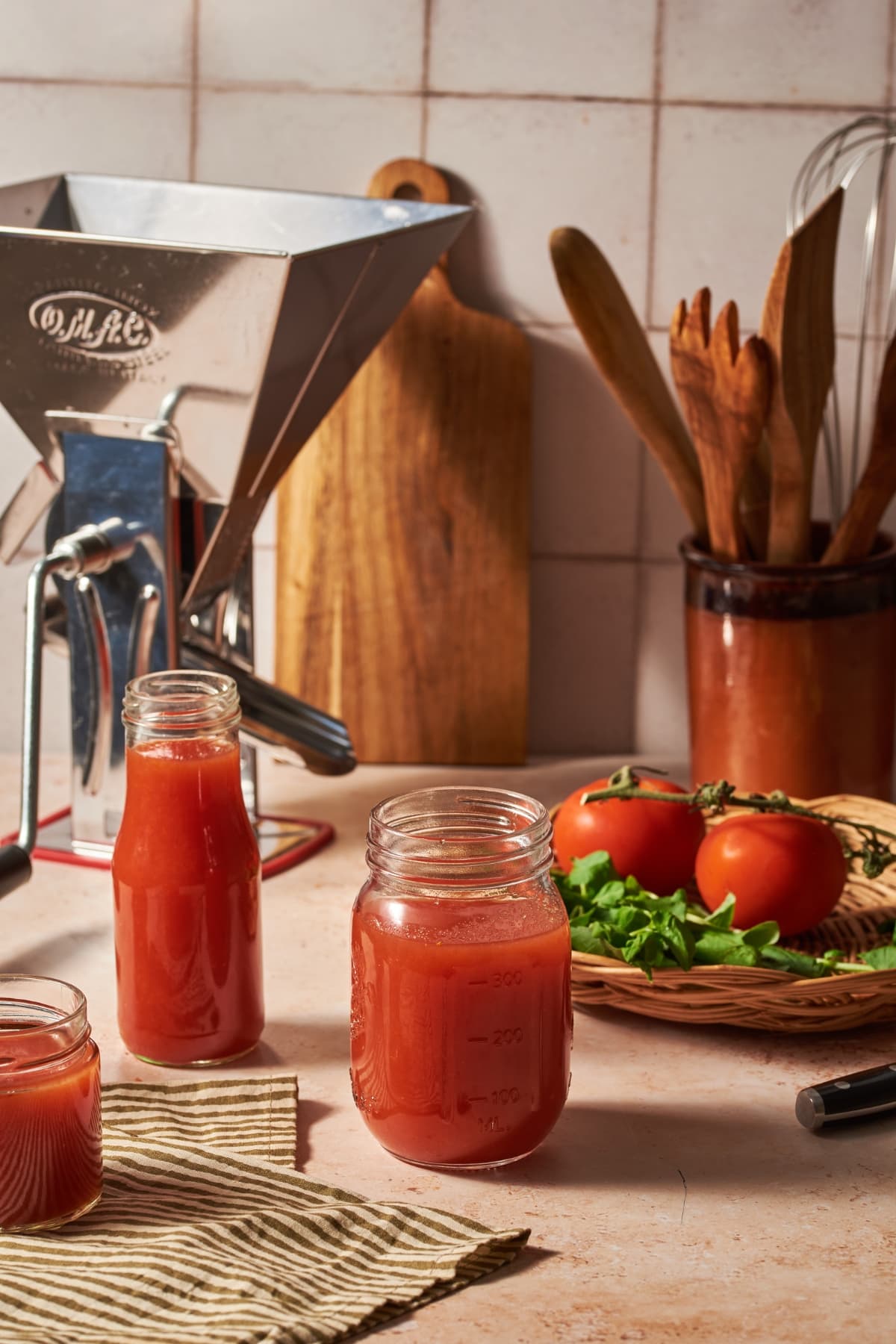
Passata di pomodoro is a long standing family tradition in Italy, especially southern Italy, where tomatoes grow in abundance and are an Italian pantry essential. At the end of August, when the tomatoes are at their peak ripeness, an Italian family will gather together to prepare enough passata di pomodoro for the next year and then can them in sterilized glass jars or glass bottles. In one or two days, they will process enough tomatoes for a full year!
However, tomatoes were not always an Italian staple. They were brought to Europe in the 16th century by the Spanish returning from the New World. Incredibly enough, there are more than 10,000 types of tomatoes known today.
At first, the plants were ornamental as they were bitter and even toxic. Yet over time, the tomatoes adapted to the Mediterranean climate and became sweeter and more like they are today. After the plants began to change, Italians started incorporating them into their cuisine. And now, families come together every year to pick the ripest tomatoes from the vines and make enough tomato passata for the entire year!
The tradition of making tomato passata at the end of each summer has reached other countries as well, as Italian immigrants continued to gather and bottle jars upon jars of passata even when living in faraway lands. Everyone has an assigned job on “Passata Day,” and the family works together as a team to keep the tradition going.
While getting the family together to make tomato passata is important for food production, it is also a very social event. There is food, wine, and lots of conversation as the tomatoes are processed. It is a wonderful moment for bonding, which is probably another reason why this tradition has continued to the present day.